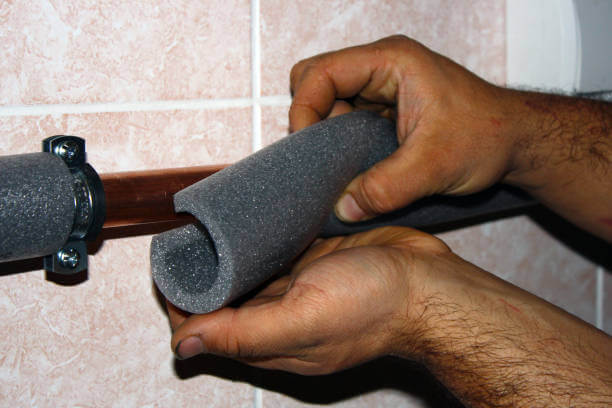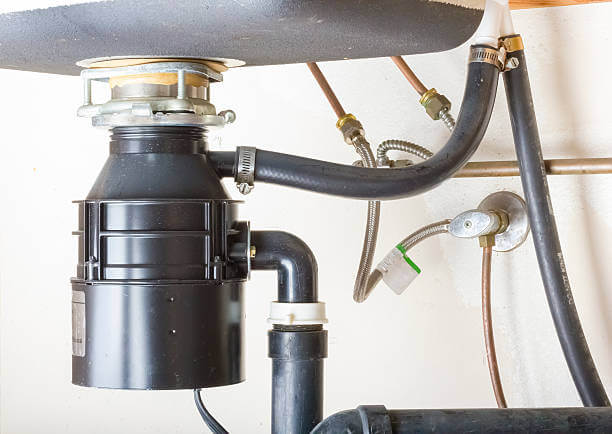What Is a Greywater System?
Greywater refers to relatively clean wastewater generated from household activities like bathing, laundry, and handwashing. It excludes water from toilets or kitchen sinks, which is considered black water due to higher levels of contamination.
A greywater reclamation system collects, filters, and redirects this gently used water for reuse. Instead of sending all water to the sewer, these systems route greywater to specific applications, most commonly outdoor irrigation.
How Do Greywater Systems Work?
A basic greywater reclamation system includes:
- Collection pipes to capture water from laundry, bathroom sinks, and showers.
- Filters or diverter valves to remove hair and debris.
- Storage or surge tanks to hold water briefly before reuse.
- Distribution lines that direct greywater to its new use, usually through drip irrigation.
Some advanced systems include pumps and treatment units, allowing greater flexibility and more reliable water quality. The illustration below shows how a more advanced system works:

On average, greywater systems can reuse 30% to 40% of a household’s indoor water usage, saving up to 40,000 gallons per year.
Passive vs. Active Systems
Greywater systems can be either passive or active:
- Passive systems rely on gravity to move water from source to destination. They’re ideal for simple, low-maintenance setups like laundry-to-landscape configurations.
- Active systems use pumps, valves, and controllers to distribute water, offering more flexibility and automation. These are well-suited for complex landscapes or homes with minimal slope.
Understanding your property’s plumbing layout and elevation is key to choosing the right setup.
Types of Greywater Systems
- Laundry-to-Landscape Systems: These are among the most affordable and easiest to install. They connect your washing machine to a gravity-fed irrigation system without the need for pumps or storage tanks.
- Branched Drain Systems: Ideal for homes with good gravity flow, these systems split greywater into multiple outlets for irrigation and require careful planning for effective distribution.
- Pumped or Filtered Systems: These more advanced setups use pumps and treatment filters to manage greywater for broader reuse, including flushing toilets or watering large gardens. They offer more flexibility but are also more expensive and complex.
How Much Do Greywater Systems Cost?
Costs vary based on system type, home size, and installation complexity:
- Basic laundry-to-landscape, or no-tank, systems: $800 to $2,000
- Advanced automated systems with filtration and pumps: $5,000 to $20,000
Average installation cost: $2,500 to $4,500
Cost factors include:
- System complexity and number of water sources.
- Existing plumbing layout.
- Local labor rates and permitting fees.
- Add-ons like tanks or UV treatment.
Greywater System Regulations
Before installation, check with your local building department to understand greywater regulations. Many municipalities require permits for systems that modify existing plumbing or include pumps and filtration units. Some regions only allow greywater use for sub-surface irrigation, while others require licensed contractors for installation. Ensuring compliance not only keeps your system legal but also protects your health and the environment.
Greywater System Guidelines
While greywater systems can be an excellent way to save and reuse water, some guidelines must be adhered to to ensure that your system continues running smoothly and the water is safe to use.
What Water Can Be Reused as Greywater?
Safe to reuse:
- Shower and bath water.
- Bathroom sink water.
- Laundry rinse water (no diapers or heavily soiled loads)
Do not reuse:
- Water from kitchen sinks or dishwashers.
- Toilet water (blackwater).
- Water containing high levels of salt or harsh chemicals.
Homeowners should also consider local climate and soil type when planning a greywater system. For example, clay soils absorb water more slowly and may require different distribution methods compared to sandy soils. Additionally, homes in colder climates should winterize exposed pipes and components to prevent freezing and ensure year-round functionality.

Is Greywater Safe for Plants?
Yes, but with guidelines:
- Use only on non-edible plants or apply to soil (not leaves).
- Avoid using on acid-loving plants unless adjusted.
- Let greywater soak into the soil; avoid pooling or runoff.
Safe Soaps and Detergents
Use products that are:
- Biodegradable
- Phosphate-free
- Boron-free
- Free of chlorine bleach and synthetic fragrances
Avoid antibacterial soaps, as they can harm beneficial soil microbes. Powdered detergents often contain salts that are harmful to plants, so opt for liquid alternatives when possible. When in doubt, consult your system installer for approved product lists.
Benefits of Greywater Systems
- Save water and money.
- Eco-friendly landscaping.
- Ease strain on septic systems.
- Boost sustainability.
- Increase resale appeal.
Greywater System Installation
Installation Steps:
- Choose water sources to divert.
- Install diverter valves and filters.
- Connect to irrigation or reuse application.
- Test and adjust the system.
DIY or Professional Installation?
- DIY is possible for simple laundry-to-landscape systems.
- Professional installation is advised for whole-house or pressurized systems, especially where permits are needed.
Maintaining a Greywater System
Regular inspections not only extend system lifespan but also ensure your setup remains compliant with evolving local codes. Scheduling an annual checkup with a professional can catch small issues before they become costly problems.
- Clean Filters: Monthly or as needed.
- Check for Clogs or Leaks: Every 3 to 6 months.
- Flush Tanks: Every 6 to 12 months, if included.
- Test Soil and pH: Annually to protect your landscaping.
- Keep a maintenance log and inspect landscape health regularly.
Installing a greywater system is a smart, eco-conscious upgrade for any home. Whether you’re building a basic setup or investing in a more advanced system, Modernize can connect you with licensed local professionals who specialize in plumbing and water-saving solutions. Get started today and explore customized options to help your household conserve water without sacrificing comfort. A greywater reclamation system can also be part of a broader sustainability plan that includes low-flow plumbing fixtures, rainwater harvesting, or smart irrigation. Let Modernize help you find the right experts to bring your water conservation goals to life.
Compare top-rated plumbing pros in your area.
Read real homeowner reviews, explore qualifications, and view promotions. Modernize makes it easy to browse professionals and find one that will be perfect for your project.






